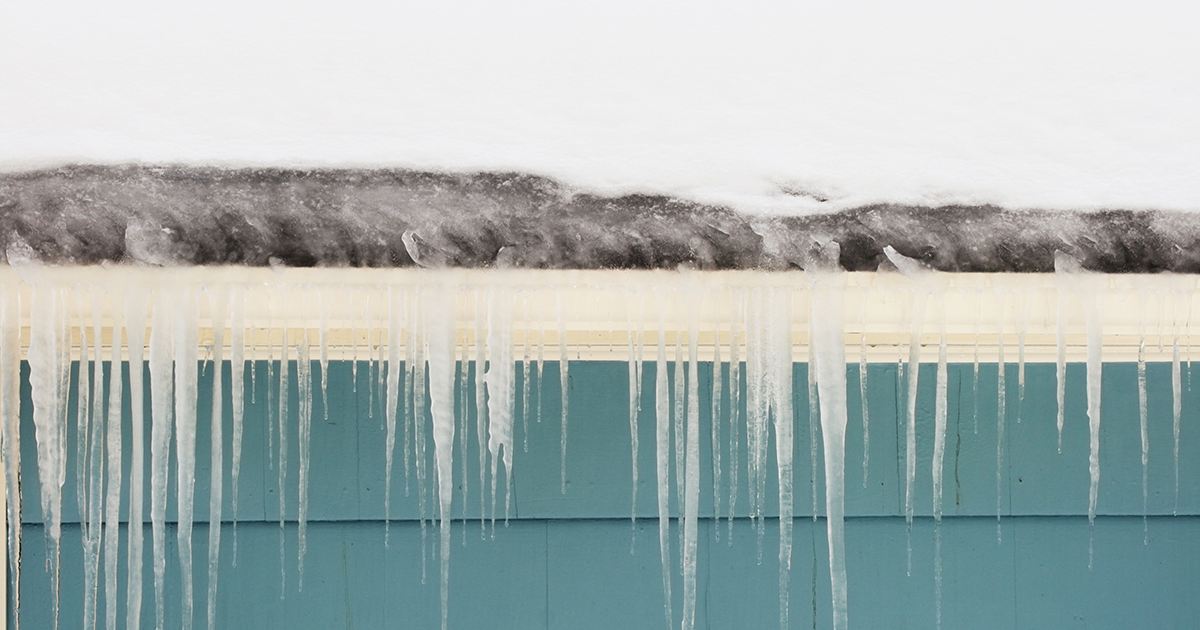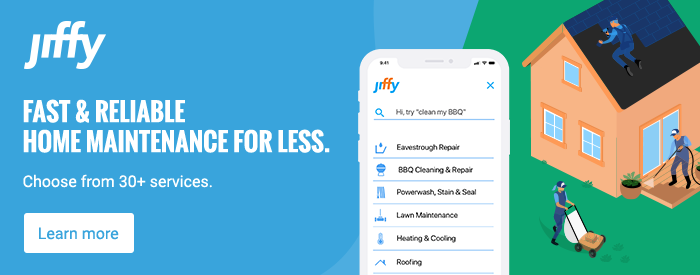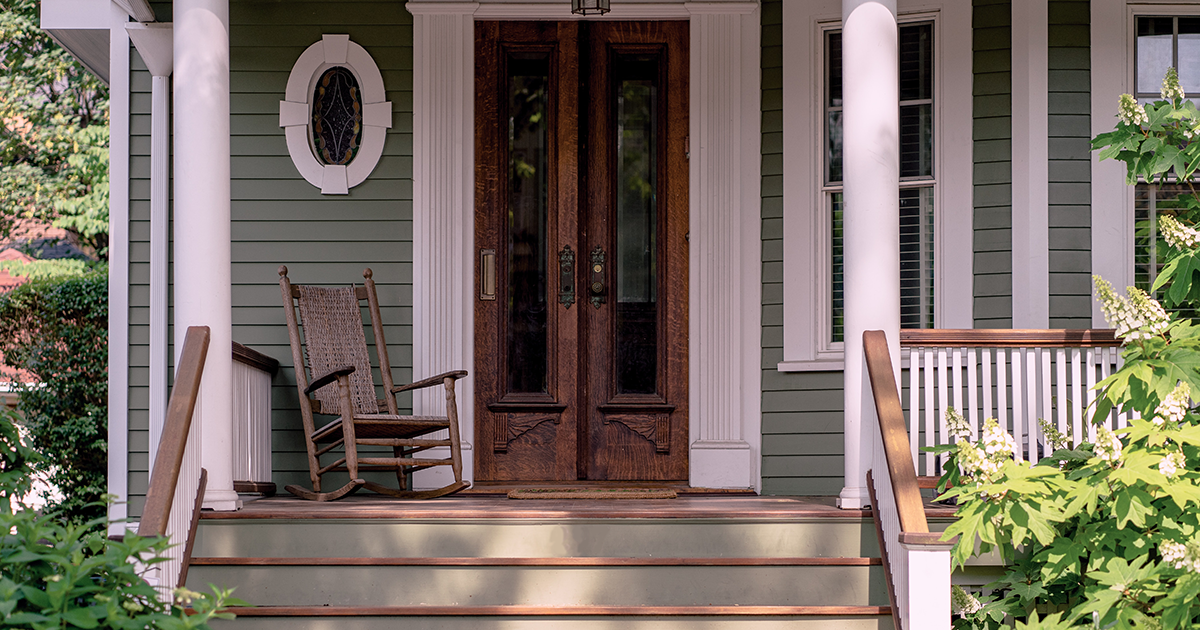Jiffy is a platform that instantly connects homeowners with nearby, quality home maintenance and repair professionals in over 30 categories. Welcome to our blog, where we share home maintenance tips, inspirational design ideas, and information on how we make it easier than ever to complete projects around the house.
If you live in Southern Ontario or the Northeastern United States, you’re well aware that winters can be downright nasty.
Sometimes they can be surprisingly mild and occasionally even beautiful, but more often than not, winter in these areas means blizzards, bitter cold, freezing rain and heavy snowfall. The craziness of the weather can often force homeowners to contend with some unique issues around the home. Namely, at what point could all this snow come right through my roof?
This may seem like an extreme consideration at first, but neglected rooftop snow can do some pretty serious damage. Winter roof collapse is more common than you may think. During a particularly bad storm in Boston back in 2015, 44 roofs caved in over a two-day period!¹ Unchecked snow and ice buildup can also result in interior home damage, while also presenting a falling hazard for unsuspecting people on the ground.
With extreme weather becoming increasingly common and the impending heavy snowfall this season will bring, understanding and addressing rooftop snow accumulation is important to maintaining a safe and structurally sound home.
How Much Snow Can My Roof Hold?
According to the National Research Council of Canada, a roof should be able to withstand pressure of at least 21 pounds per square foot (psf).² This number can fluctuate based on regional building regulations, but any well-built roof should be able to sustain this much weight before it gets too stressed.
Where things get concerning is when the accumulation creeps up into the 25-30 psf range. At this point, a roof can start to stress and potentially give way if the pressure from the built-up snow or ice persists.
If there’s a nasty winter storm in the forecast, be proactive! Examine your roof ahead of time to determine whether there’s a significant amount of buildup in specific areas or across the whole roof.
What Does Too Much Snow Look Like?
So, you’ve gone outside to have a look at the snow already piled on your roof. Now what? How can you tell if it’s getting into dangerous territory?
Unfortunately, it’s not as simple as eyeballing the height of the pile. That’s because the weight of snow can significantly fluctuate depending on the state it’s in. Light, fluffy snow weighs far less than that wet, heavy, perfect-snowball snow. The depth of the accumulation doesn’t matter so much as the weight of the accumulation.
One foot of fresh, light snow can weigh as little as three pounds per square foot, whereas one foot of the wet, heavy stuff can weigh around 21 psf. The difference is even more pronounced when it comes to ice. One foot of ice can weigh as much as 57 psf!³ Granted, that’s a lot of ice, but you get the idea: when it comes to ice and densely packed snow, a little can go a long way towards putting your roof at risk.
Recognize These Potential Risks and Warning Signs
1. Lookout For Unbalanced Snow Loads
Accumulated snow and ice is at its most dangerous when it collects at different depths at specific points on your roof. This can happen when winds pick up and move large quantities of snow from one spot to another, stressing one area in particular.
Ice and snow tend to readily accumulate in skylights and roof valleys, around dormers and chimneys, and in roof areas that sit next to taller sections of a house. If your home includes any of these features, keep an eye out for disproportional snow and ice buildup.
2. Flatter Roofs Present Unique Challenges
For many homes, the roof’s slope is the key factor in keeping accumulation at bay. The steeper the pitch, the better chance your home has to shed snow. That’s why A-frame cabins and homes are so common in mountainous, snow-prone regions.
For those of us who don’t live in these alpine wonderlands, shallow-pitched roofs are far more common. Snow and ice build up much quicker on areas of the home with flatter roofs, so it’s important to keep an extra diligent eye on these areas throughout the winter.
3. Watch Out For Ice Dams
Ice dams occur when heat moves through the slanted portion of a ceiling via conduction. This heat melts rooftop snow, causing it to run down towards the eaves as water. An icy ridge can then form at the eave overhang, as it’s an area that’s cut off from the home’s internal heat. As more water drains down and freezes, more snow piles up and the stress on your roof increases. To make matters worse, backed up water can pool and potentially leak into your home.
If you notice an ice dam around your eaves (icicles are usually a telltale sign) it’s important to have professionals remove the obstruction. It also might be worth having your attic and roof insulation looked at to identify areas for improvement.

4. Damaged and Decaying Roofs More Susceptible to Collapse
Damaged or decaying roofs can present numerous seasonal challenges that should be assessed by a roofing Pro. It’s important to be mindful of the condition of your roof and ensure that it’s in good shape before winter truly sets in.
Address Rooftop Snow and Ice Before Any Issues Arise
Dangerous levels of snow and ice accumulation can be hard to gauge on your own, so why take any chances? It’s better to have the issue addressed by professionals before it gets out of hand. Many companies offer rooftop snow removal services that are trained, insured and licensed to do the job right.
And once that all that loose snow and ice inevitably falls onto your driveway, porch or front steps, book snow removal services with Jiffy to help clear up mess that’s left behind!
Sources
1. https://www.usatoday.com/story/news/nation/2015/02/21/kostigen-snow-roof/23671405
2. https://www.nrc-cnrc.gc.ca/eng/solutions/advisory/codes_centre/faq/snow_loads.html#Q3
3. https://www.fema.gov/media-library-data/7d8c55d1c4f815edf3d7e7d1c120383f/FEMA957_Snowload_508.pdf
4. https://extension.umn.edu/protecting-home-rain-and-ice/dealing-and-preventing-ice-dams







